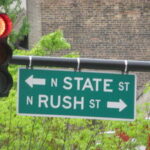Don’t have a safe? Don’t worry! A little creative thinking can keep burglars from getting at your small valuables. All things considered, a safety deposit box in a bank vault is still the best place to keep valuables, but there are some places around your home that also make effective hiding places for important items.
The Chicago Crime Commission has found that a burglar spends an average of 8 minutes in the victims home, which leaves them with only enough time to check the more obvious locations for valuables. The hiding spots listed here are relatively secure from the average thief who’s just making a quick dash through for easy pickings. If, however, someone breaks into your home looking for a specific item that they know is there somewhere, given enough determination and time, they may find the item even in these hiding places.
Beware of Traditional Hiding Places
If it didn’t take you long to think of a hiding spot, it won’t take a burglar long either. Don’t think stashing things under the mattress, a drawer (even taped to the underside), or a rug, behind pictures, or in the cookie jar will keep your valuables safe. Burglars already know about these tricks.
Which Room is Safest?
Most people keep their more valuable items in the sitting room and the bedroom, so that’s where most burglars start searching. Because thieves know it’s risky to spend a lot of time in the house, though, they often bypass rooms they believe won’t offer much in the way of valuables.
Unless the burglar happens to notice some extraordinarily expensive-looking cooking equipment, he’s likely to skip the kitchen together. The bathroom is another room that’s often ignored. Avoid the medicine cabinet, though. Sadly, there are drug addicts who burglarize homes looking not only for cash and items to sell, but for prescription drugs, too. Instead, hide valuables among personal hygiene items and cleaning supplies in the back of the lower cupboards.
Although basements and attics are traditional storage spaces, they’re also traditionally messy and not many burglars want to take the time to search through them just to end up finding nothing more valuable than Uncle Joe’s old roller skates.
Quick Hiding Places
So you’ve just bought a new ring and don’t feel comfortable leaving it in the jewelry box for a day or so. You’ve got good reason not to. If you need to hide an item temporarily, there are some simple, reasonably secure ways to do it.
Light switch plates or light fixtures can be unscrewed and small valuables hidden within the hollow spaces behind them. Of course, make sure the electricity is shut off at the breaker when you remove the plate and that the item won’t interfere with the wiring.
A stuffed toy can make a good hiding place, but make sure it’s one your child isn’t likely to take out of the house and lose. Just cut the toy open along a seam, place the item inside and sew the toy closed again. This toy should be placed in the back of your own or an older child’s closet. A tennis ball can also be slit open to hold a valuable item, then placed back in the can to be stored in the back of a closet.
While just leaving a wad of cash in the cookie jar isn’t a great idea, many food storage containers and even food itself can work well as temporary “safes. Wrap your valuables in plastic or foil and place the package inside a container of rice, beans, or flour that’s stored out of sight or at the back of a shelf. Condiment containers, such as ketchup and mayonnaise bottles, can also hold small items. Consider wrapping jewelry or cash in foil and storing it in the freezer. Packages of frozen vegetables can be thawed and refrozen with items inside them.
Diversion safes: how beer and soup can defeat thieves
A diversion safe is a small, non-locking safe that looks like an ordinary household item, such as a beer can, soup can, candle, or pack of CDs. Some are even made to look like real products, such as OxiClean sink cleaner. There are also salt shaker and water bottle safes that, rather than being completely opaque, actually appear to be filled with salt or water. According to the Chicago Police, beer can “safes” can conceal valuables even better than real safes.
These safes are also attractive (to homeowners, not burglars!) because they’re cheaper than the steel-and-concrete variety. Some of the cheapest models, however, may not be effective. It’s vital that a diversion safe really look like the item it’s supposed to be. It should also be weighted to feel real if the burglar picks it up. Mass produced book safes in particular tend to look and feel fake, so you may be better off making your own by cutting the center out of a real book (a boring and badly written one, of course).
While a locked safe is the most secure way to store your valuables, there are times when it’s just not an option. For these cases, creative hiding places in the kitchen or bathroom can do a lot to protect your small valuables.





